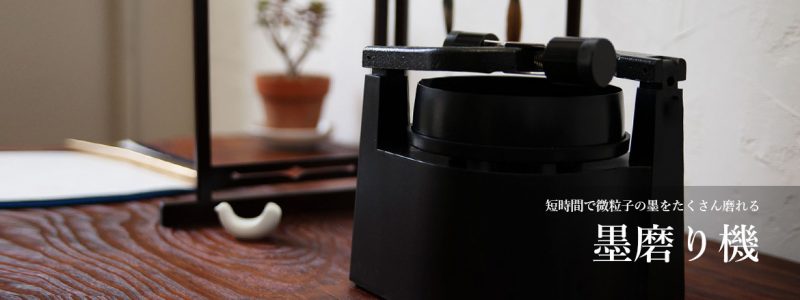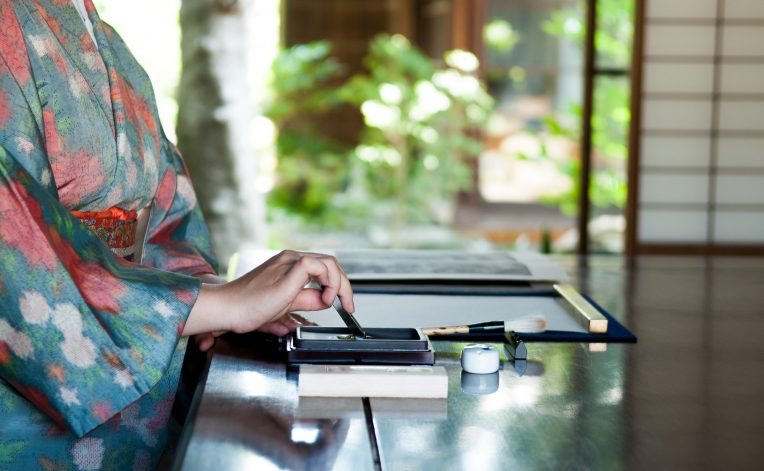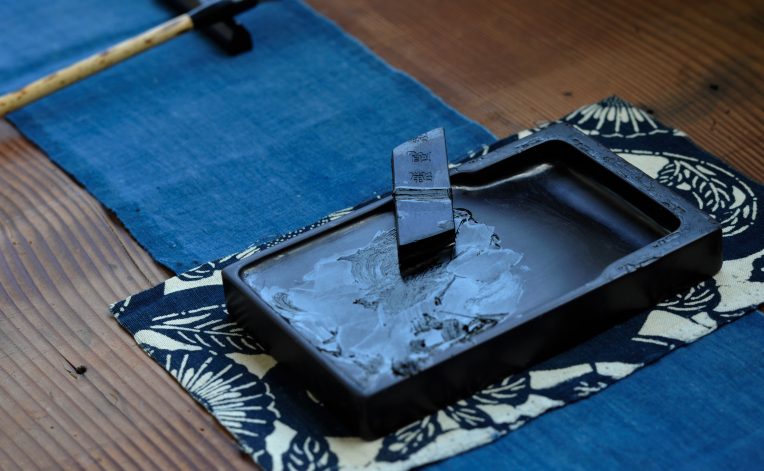記事見出し
Beautiful ink is created by gently and slowly grinding it with a weak force.
To bring out the true color of the ink, it is considered most important to use freshly drawn water and gently grind the ink with only the weight of the ink on the inkstone, slowly and with a weak force.
The act of “grinding ink” is not merely about creating ink liquid but also regarded as an important practice that allows one to find tranquility through the pleasant fragrance and faint grinding sound of the ink. It offers a chance to calm the mind and experience a serene excitement while contemplating the ink color, brushes, and paper, nurturing creative ideas.
Throughout history, it has been said that “it is good for the sick and young girls to grind ink” and “ink should be ground with the weight of the ink only.” These statements reflect the idea that enjoying the tactile sensation of ink and inkstone without exerting force is desirable.
This appreciation for the joy of carefully grinding ink is believed to have been cherished by our ancestors, who deeply loved the four treasures of the study (writing brush, ink stick, inkstone, and paper) and understood the value of spending time to relish the process.
How to grind ink
There are actually several methods of grinding ink, and they can be divided into three categories based on their purpose. Let me explain them in a straightforward manner. Each method has slightly different characteristics, so consider the type of ink you want to create and choose the appropriate grinding method.
General Ink Grinding Method:
In daily calligraphy practice, it would be ideal to take your time and carefully grind good-quality ink. However, we understand that it might not always be possible. Therefore, let us introduce a common and efficient method for grinding ink.
〈The steps are as follows:〉
Step 1: Drop water on the surface of the inkstone, about the size of a 10 yen coin.
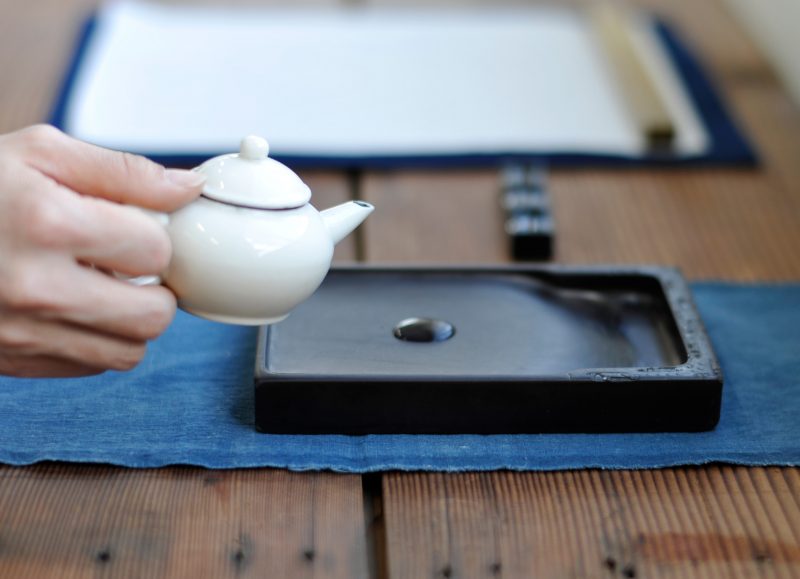
Step 2: Calm your mind and start grinding the ink slowly.
Allow the water droplet and the ink to gradually mix together, and continue patiently until it reaches a certain level of concentration. As you progress with the grinding, the ink will become sticky, and there will be a moment when a pleasant fragrance of ink wafts up. This is said to be an indication of the completion of the grinding, but it’s best to adjust the concentration to your preference.
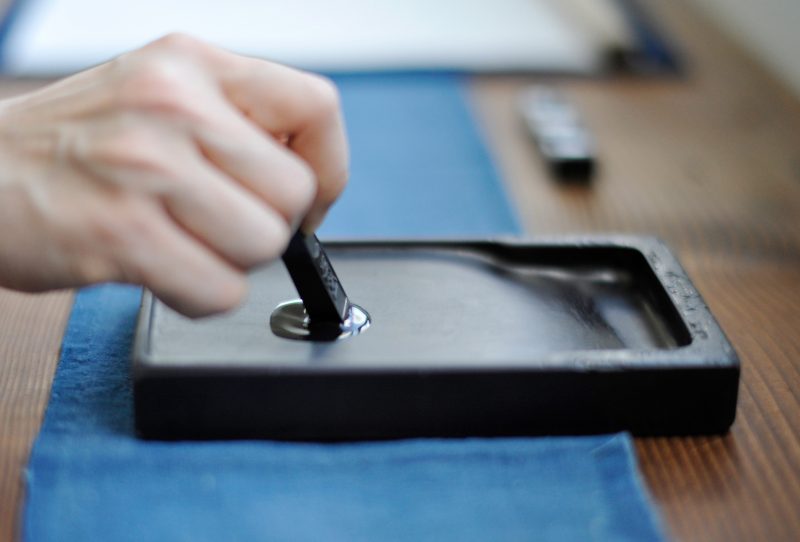
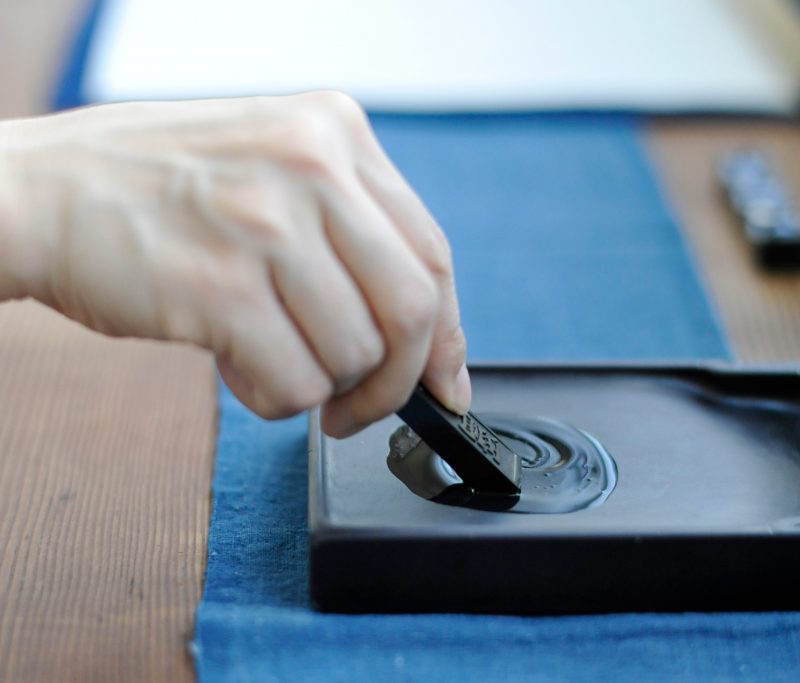
Step 3: Once the ink has been ground, add a small amount of water again and continue grinding. Repeat this process until the ink naturally flows away into the “sea” of the inkstone. The “sea” of the inkstone is the place for mixing, so be sure not to grind the ink in the “sea.”
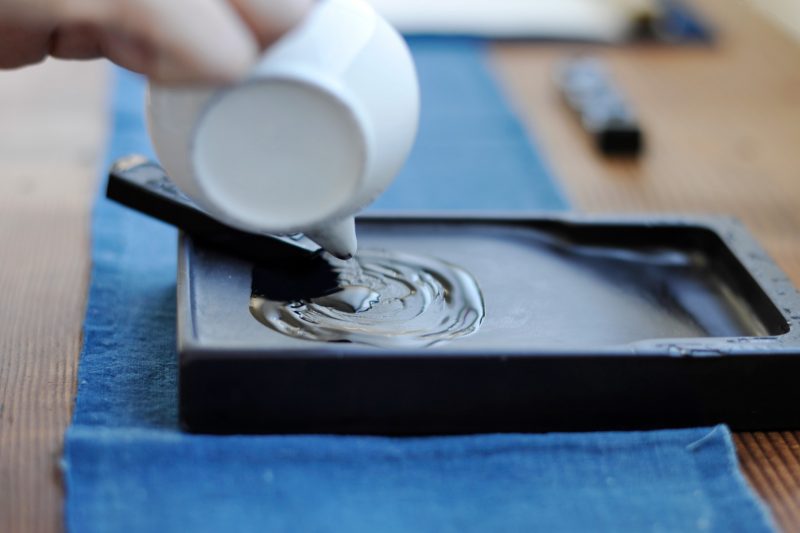
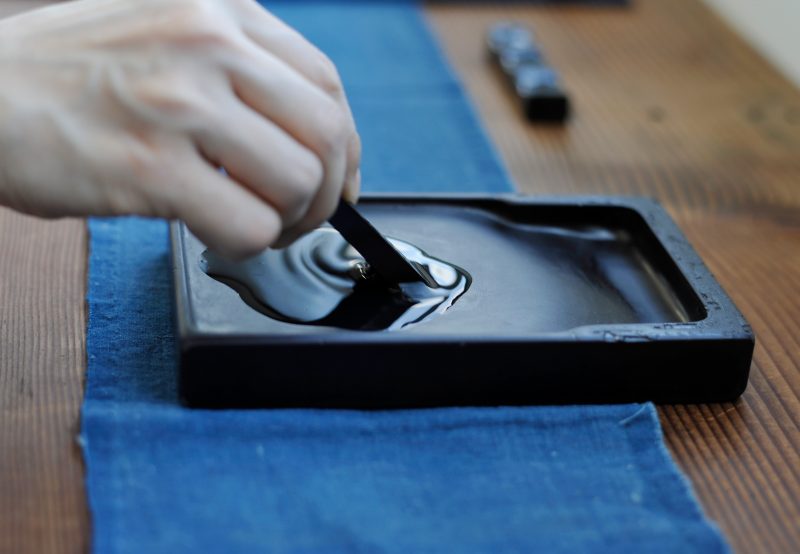
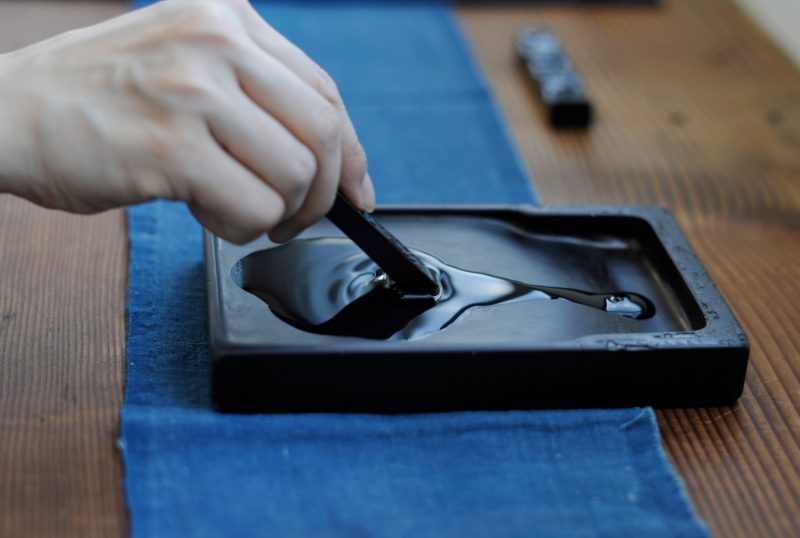
Step 4: Repeat steps ① to ③ until you have the required amount of ink. Add water gradually and create the desired consistency while controlling the brush strokes.
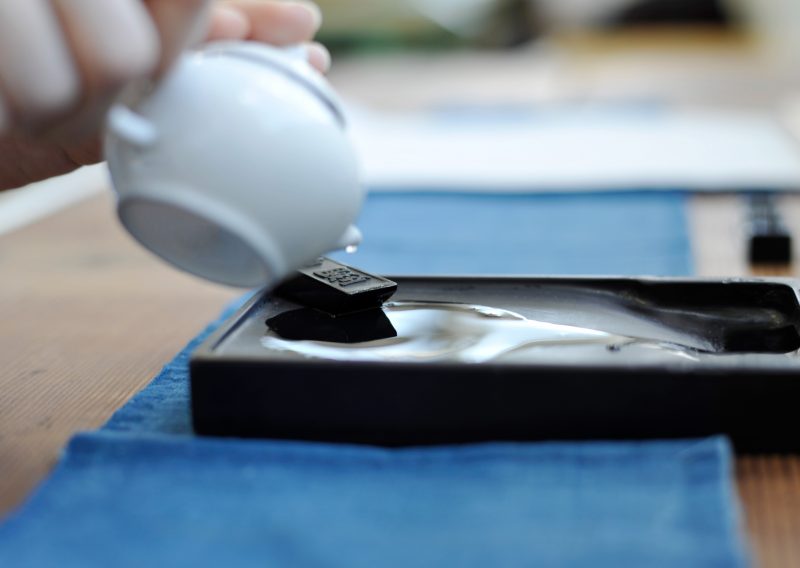
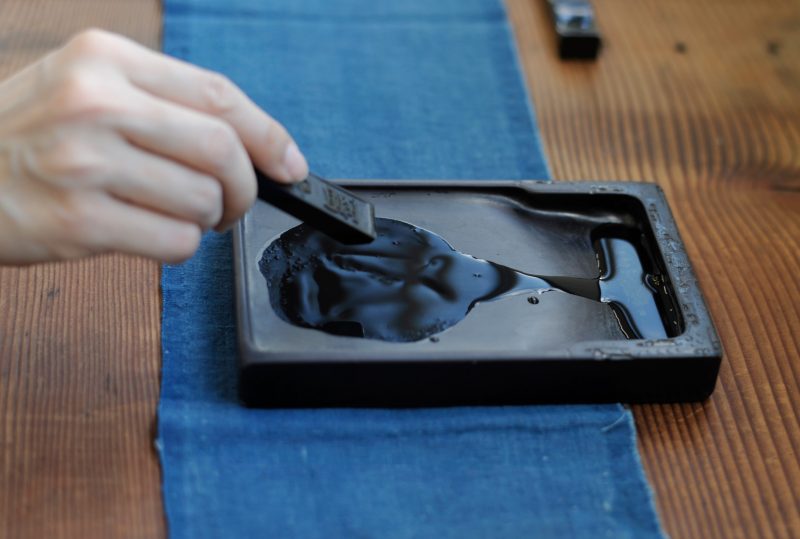
Once you finish grinding the ink, carefully wipe off any remaining moisture from the inkstone using a cloth or paper. After cleaning it, store the ink properly in a paulownia box for preservation.
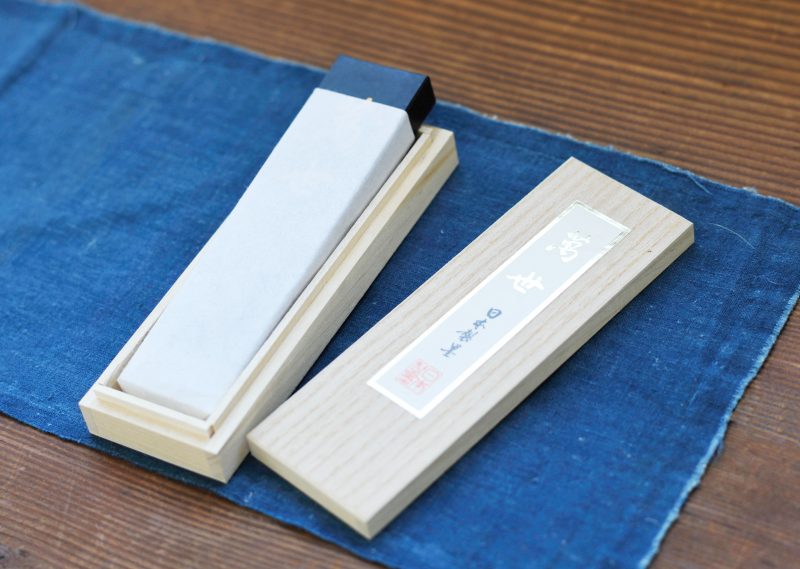
When you want to create light ink:
Light-colored ink with a soft impression is also used in watercolor painting. Here’s how to grind ink when you want to create light ink.
〈Procedure〉
① Drop a small droplet of water on the surface of the inkstone. When you want to create light ink, a very small amount of water is sufficient.
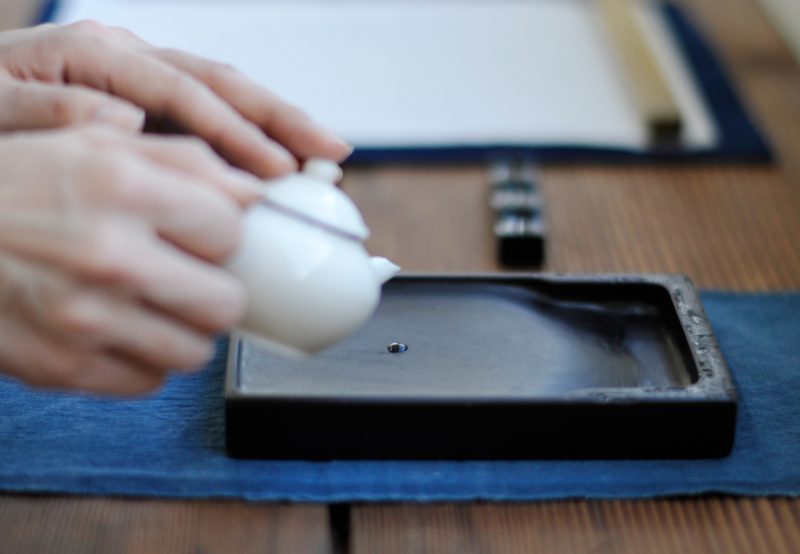
Step 2: Calm your mind and start grinding the ink slowly. Allow the water droplet and the ink to gradually mix together, and continue patiently until it transforms from a muddy consistency to a sticky state. As you progress with the grinding, there will be a moment when a pleasant fragrance of ink wafts up. Enjoy the various transformations of the ink. Once it reaches the sticky state, the process is complete.
〈Grinding Process〉
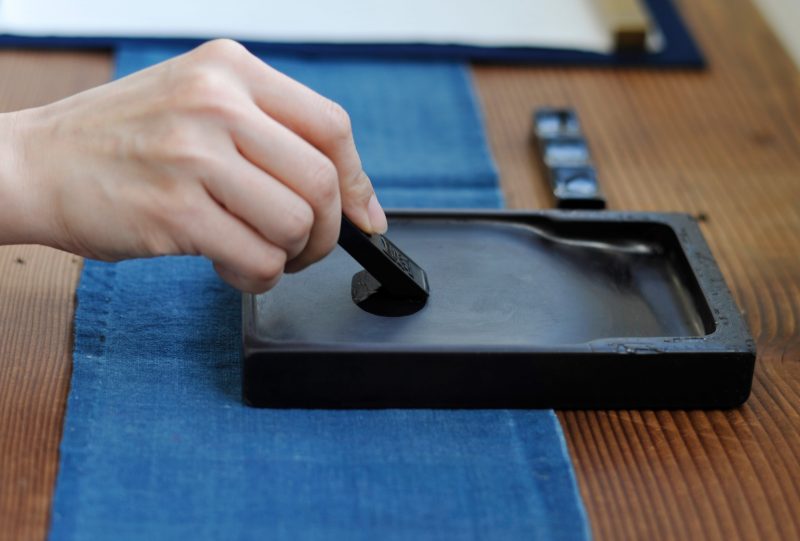
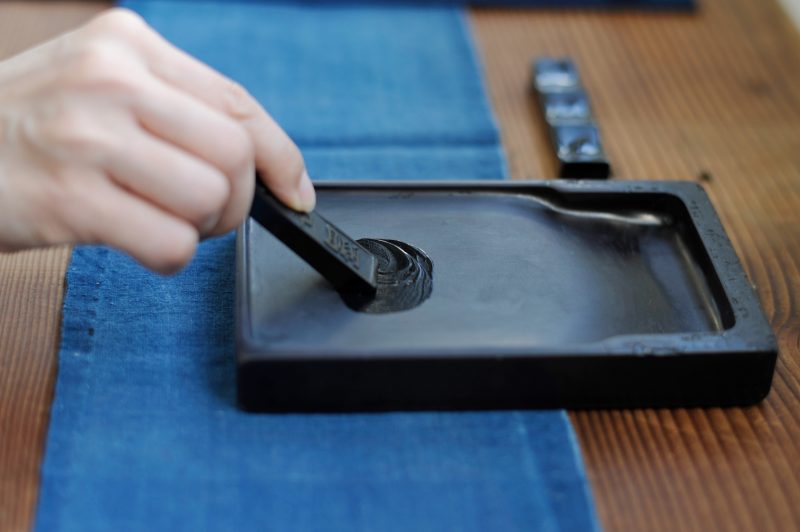
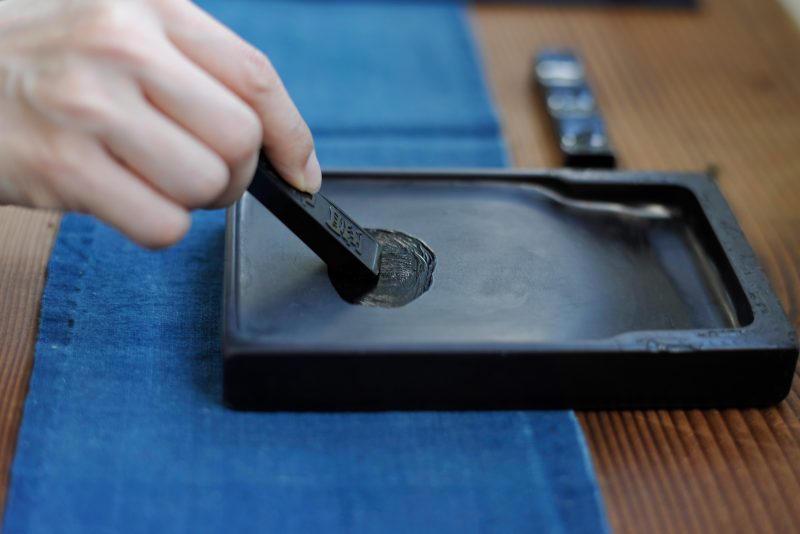
Step 3: Prepare a sufficient amount of water in a separate container for dilution. A plate or dish can be used as a container. The required amount may vary depending on what you are writing, so it’s good to consider the overall quantity needed and prepare the container accordingly. Step 4: Drop the concentrated ink from Step 2 into the container with water and mix it well. Gradually add the concentrated ink and adjust while checking the color to create light ink.
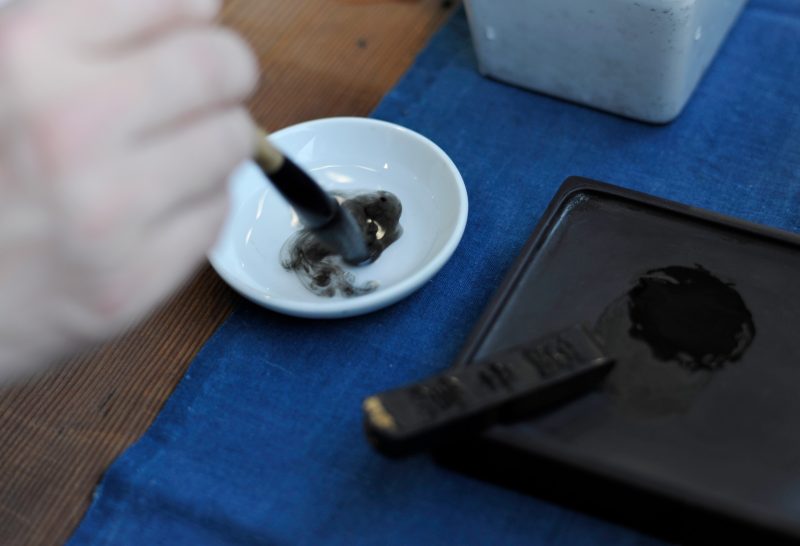
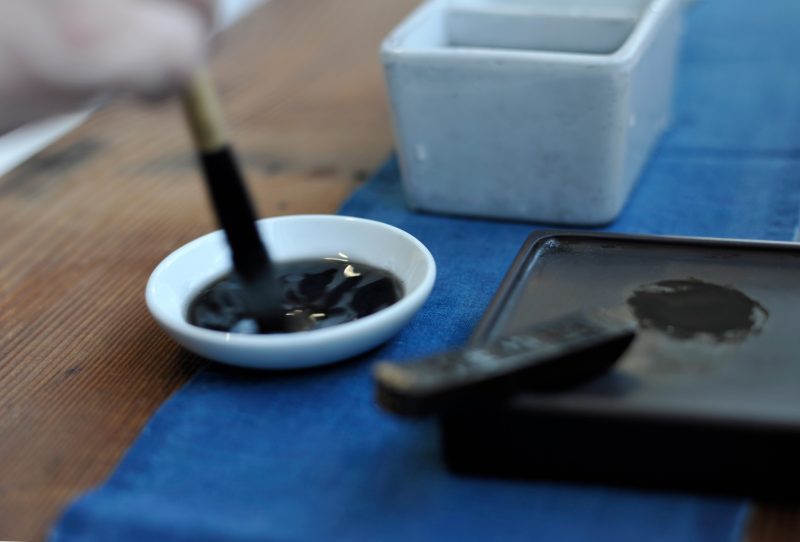
Step 5: Once you achieve your preferred level of concentration, your light ink is complete.
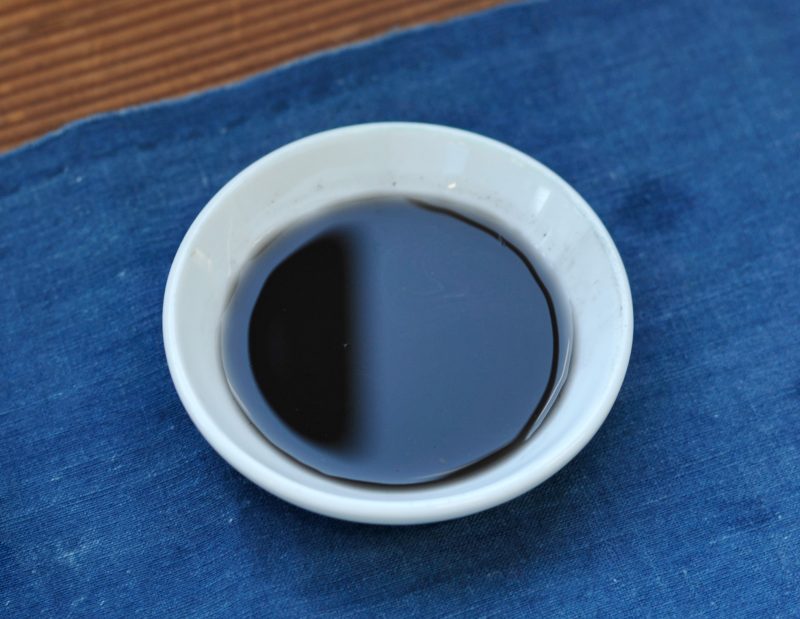
After finishing the grinding process, carefully wipe off any remaining moisture from the inkstone using a cloth or paper. Then, store the ink properly in a paulownia box after proper maintenance.

When you want to make good ink:
To bring out the true color of the ink, it is essential to create fine particles of ink. Fine particles of ink spread delicately in water and blend easily. They also influence the color of the ink when applied to paper. It is important to aim for creating the highest quality ink possible.
〈Procedure〉
① Drop water on the surface of the inkstone, about the size of a 10 yen coin.
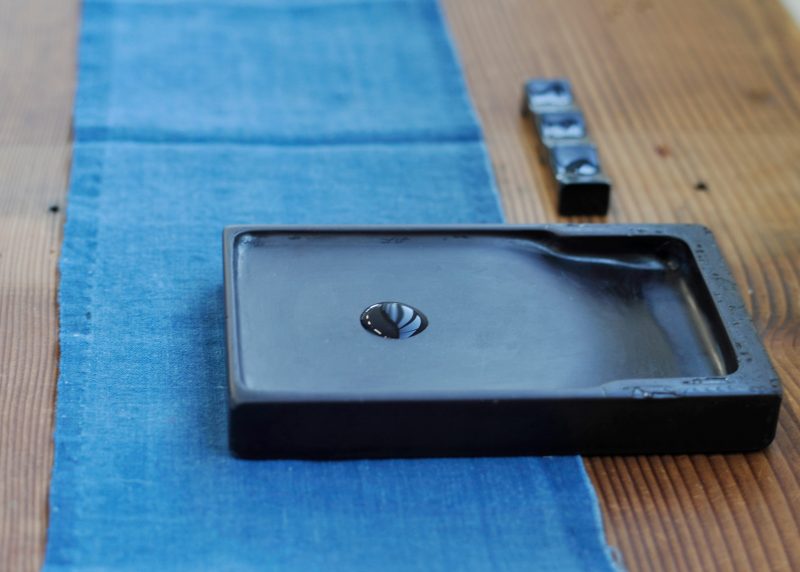
Step 2: Calm your mind and start grinding the ink slowly. Allow the water droplet and the ink to gradually mix together, and continue patiently until it transforms from a muddy consistency to a sticky state. As you progress with the grinding, there will be a moment when a pleasant fragrance of ink wafts up. Enjoy the various transformations of the ink. The ink you ground on the inkstone will naturally flow away into the “sea,” which indicates the completion of the grinding process.
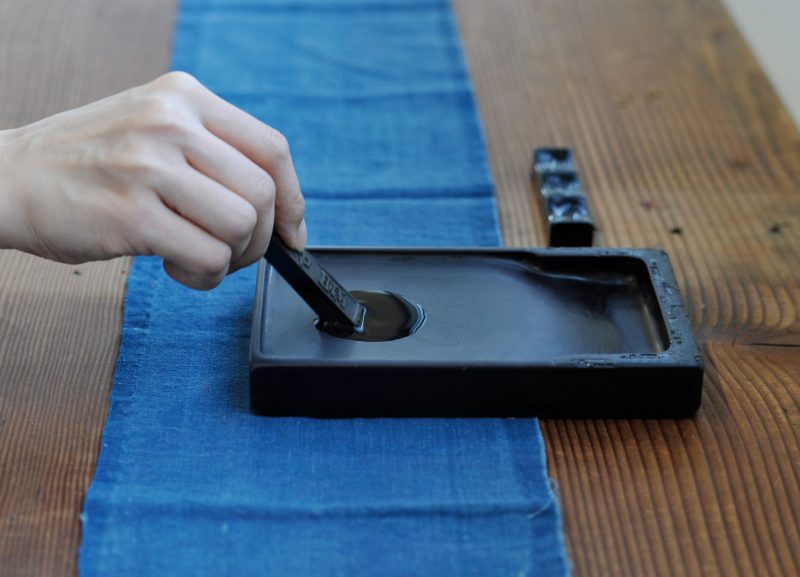

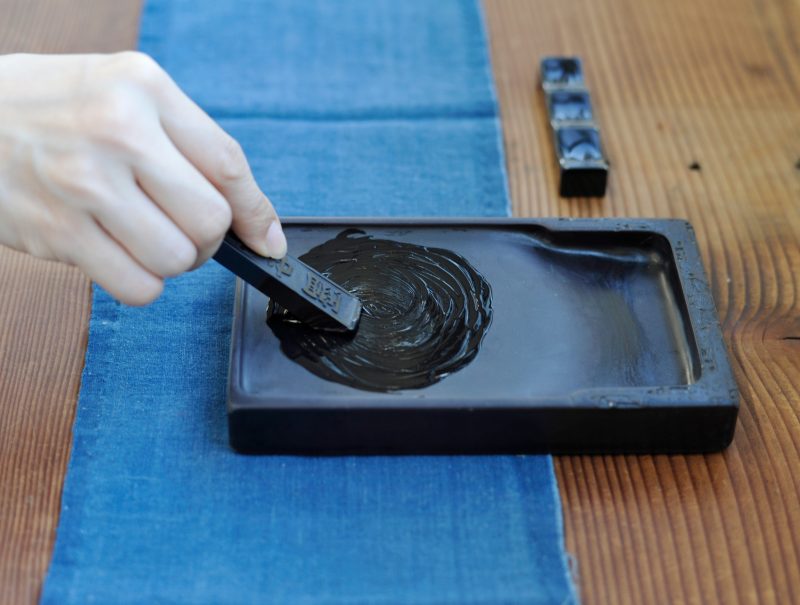
Step 3: Add a small amount of water and mix. At this stage, add water in small amounts at a time to achieve your preferred level of concentration, as adding too much water at once might dilute the ink excessively.
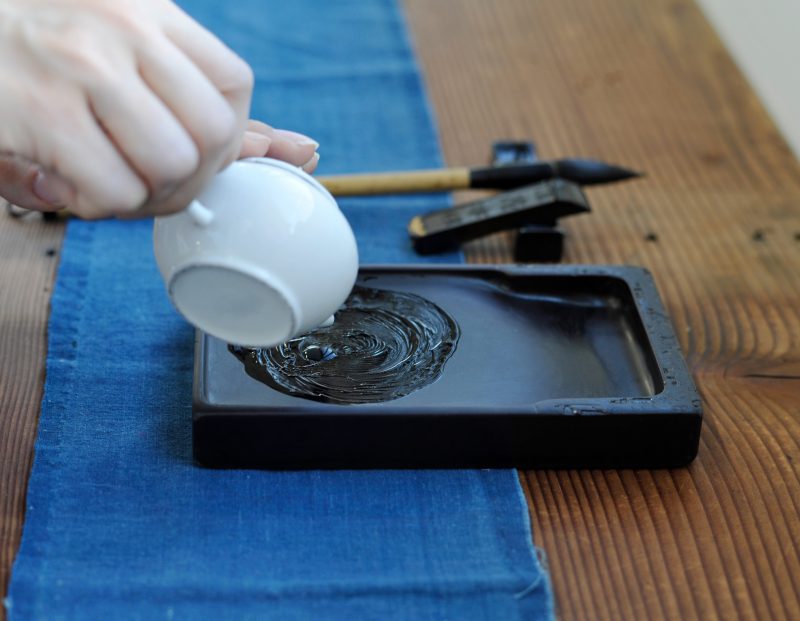
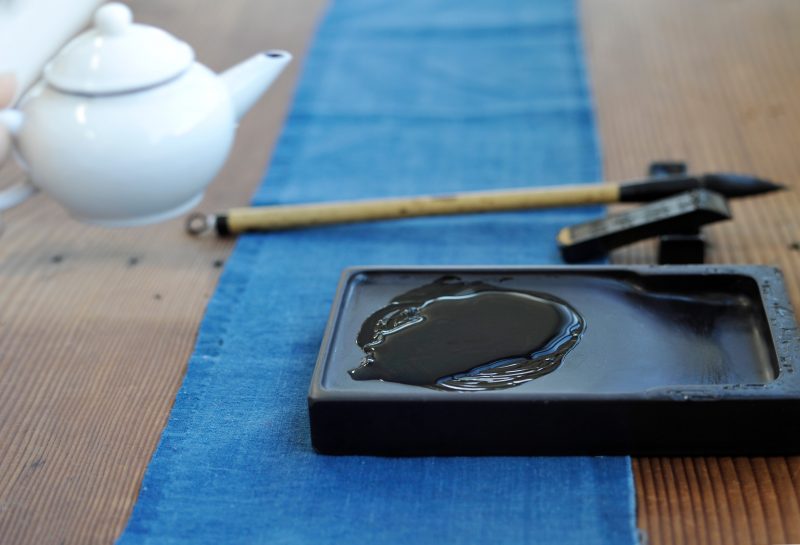
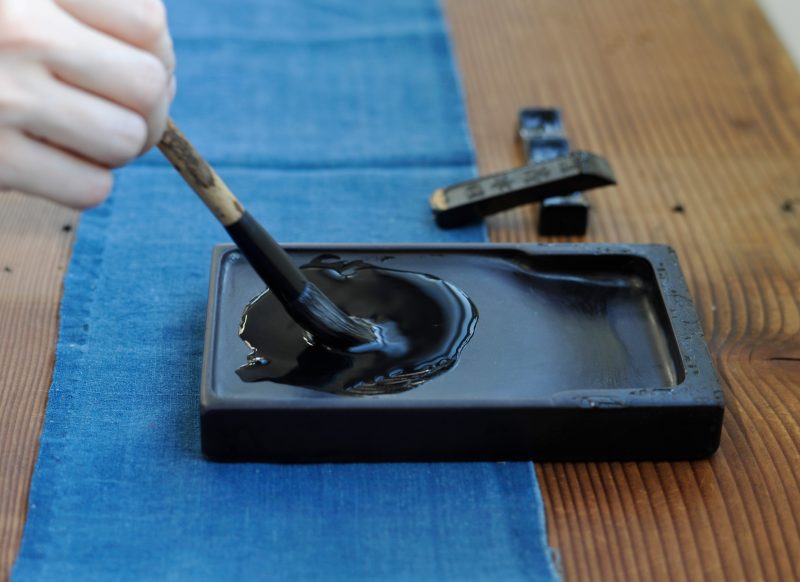
Step 4: Pour the ink into the “sea” (inkwell) and mix it thoroughly.
If you are using a flat inkstone without an “inkwell,” you can transfer the ink to a separate container and mix it there. When diluting ultra-concentrated ink to achieve the desired concentration, it is essential to dilute it gradually and mix it thoroughly. Avoid diluting it all at once.
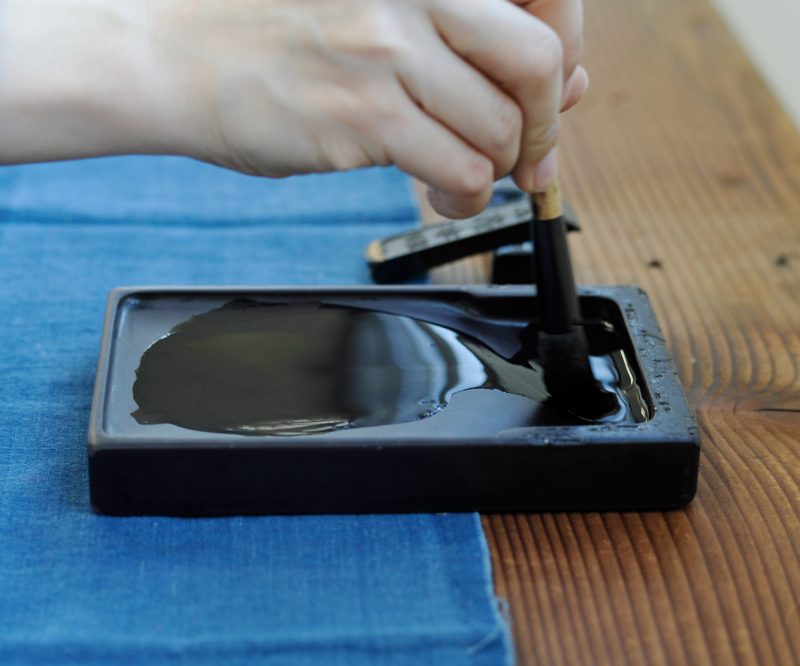
The ultra-high concentration ink created in this way has very fine particles, blends well with water, and makes adjusting the concentration much easier. This method can be considered the most desirable. After finishing the grinding process, carefully wipe off any remaining moisture from the inkstone using a cloth or paper. Then, store the ink properly in a paulownia box after proper maintenance.

How to grind the ink:
There are two main methods for grinding ink.
A: Grinding in a circular motion, similar to drawing the character “の” (no).
This method of grinding in circular motions is said to allow the force to naturally flow out, but it is also known to accumulate ink residue on the inkstone.
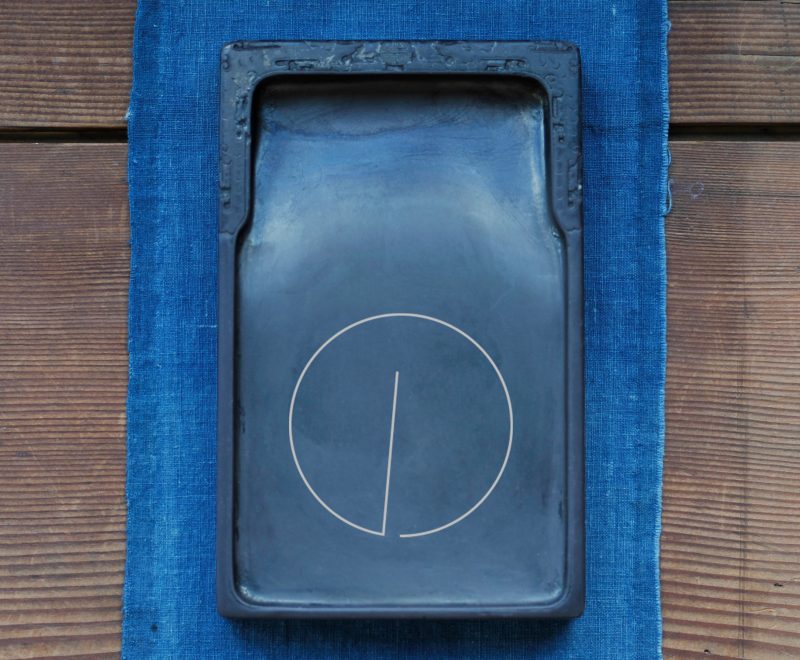
B: Grinding in a linear motion, similar to drawing the character “N” (N).
Grinding in a linear motion is said to be prone to exerting too much force, but it is less likely to accumulate ink residue on the inkstone.
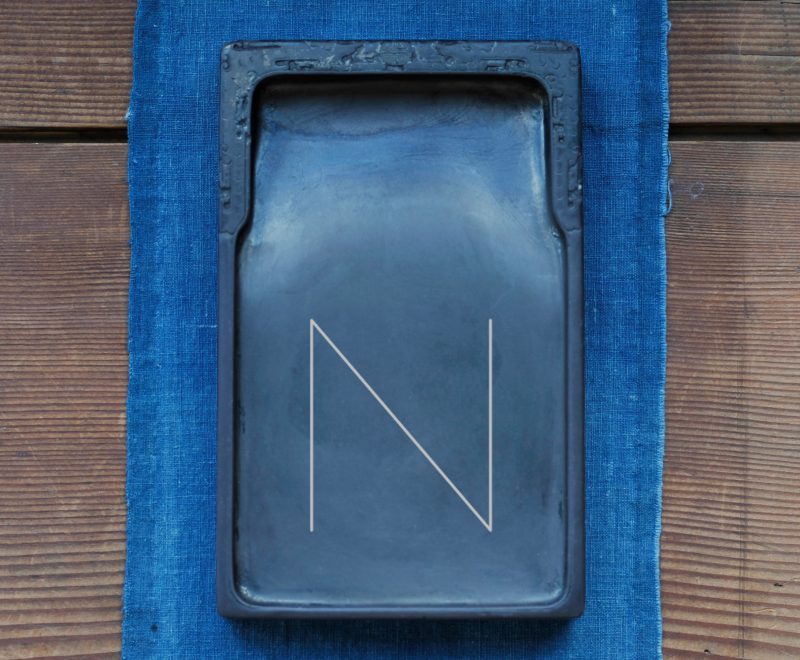
Some say that grinding in a linear motion brings out the true color of the ink, while others may argue differently. There is no definitive answer as to which method is correct. What is important is to grind in a way that feels comfortable for you.
Holding the Ink:
You may wonder about the best angle to place the ink on the inkstone. There are two main ways of holding the ink: at a perpendicular angle and at an inclined angle to the inkstone. When time is limited, and you want to grind the ink quickly, it becomes essential to increase the contact area between the ink and the inkstone. A larger grinding surface allows for faster grinding.
A: Holding the ink straight up
This method involves placing the ink perpendicular to the inkstone and leveling the grinding surface. The size of the grinding surface remains the same throughout, but the initial contact area with the inkstone is larger compared to B.
〈Leveling the grinding surface〉
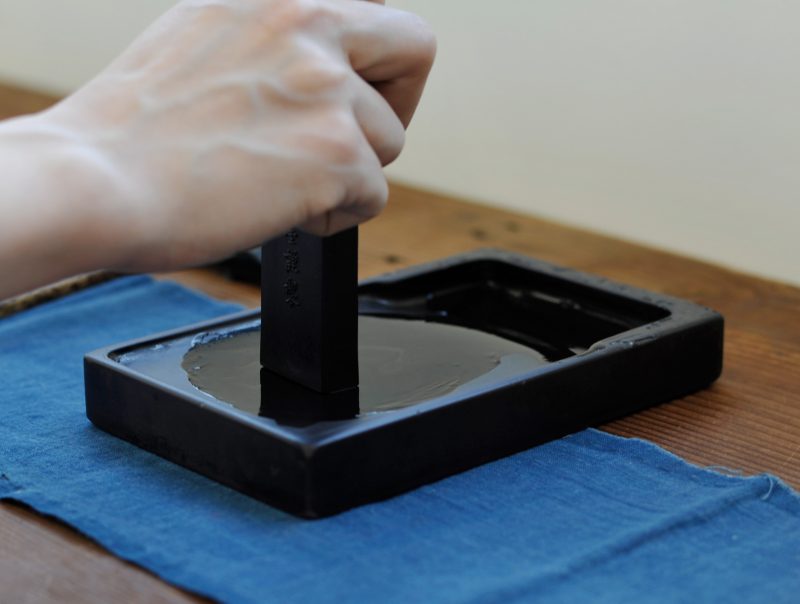
B: Holding the ink at an inclined angle
This method involves placing the ink on the inkstone at an inclined angle. There are two variations to this method: one involves grinding the ink on both sides alternately to create a V-shaped grinding surface, and the other involves grinding only one side to create an acute angle grinding surface. The initial contact area with the inkstone is small, but as you continue grinding, it gradually expands and becomes an acute angle, resulting in the largest grinding surface.
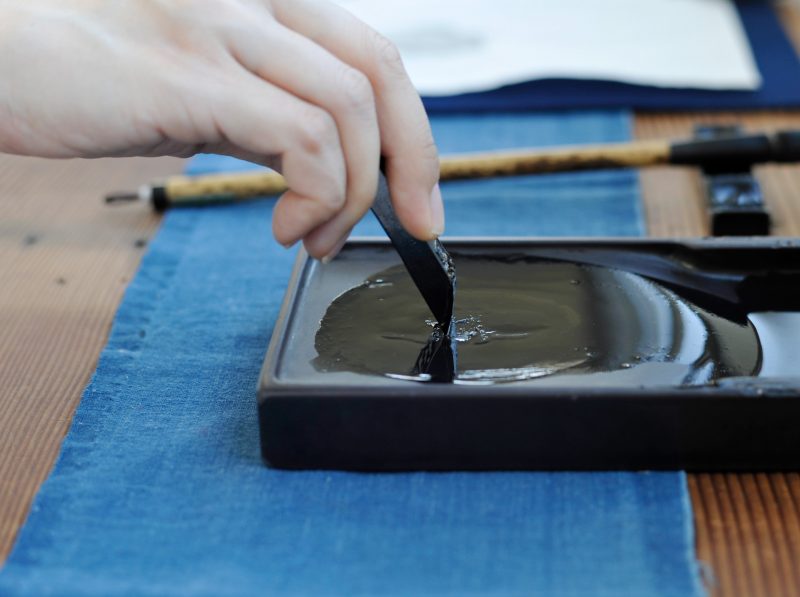
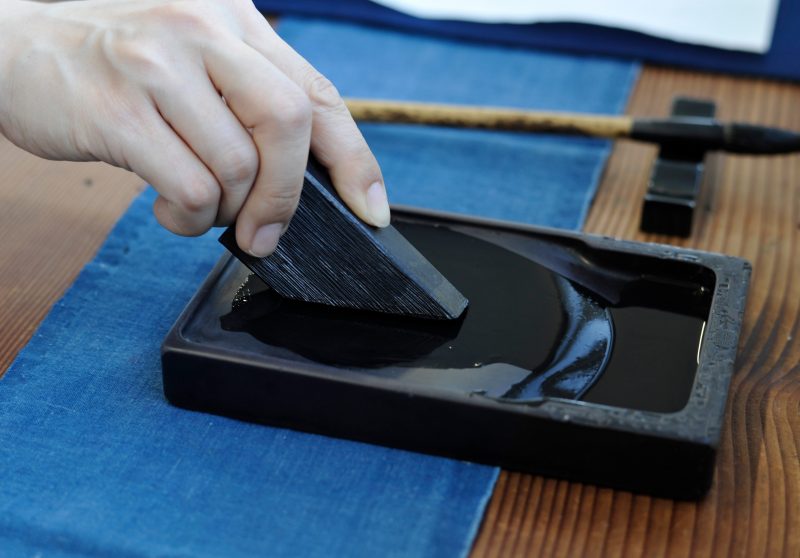
We have introduced three different methods of holding the ink, and you are free to choose any of them. While it is unlikely that the method of holding the ink will significantly affect the ink color, what is
essential is to select a method that feels comfortable for you and to grind skillfully.
Method for Grinding Ink Quickly
As a busy modern individual, it is understandable that you would prefer to grind the ink quickly. So, how can you achieve that? The answer is quite simple.
Increase the contact area between the ink and the inkstone. In terms of grinding ink quickly, method B (holding the ink at an inclined angle and grinding only one side to create an acute angle grinding surface) is recommended. It may take some time to achieve a complete incline, but a larger contact area with the inkstone will result in faster grinding.
Another method is to stack 2-3 pieces of ink on a large inkstone and grind them together, which also increases the contact area and allows for quicker grinding. However, this approach may not be very practical.
If you are short on time, using an “ink grinding machine” that grinds the ink for you is also recommended. This can be especially useful when you need a large amount of ink for creating significant works.
